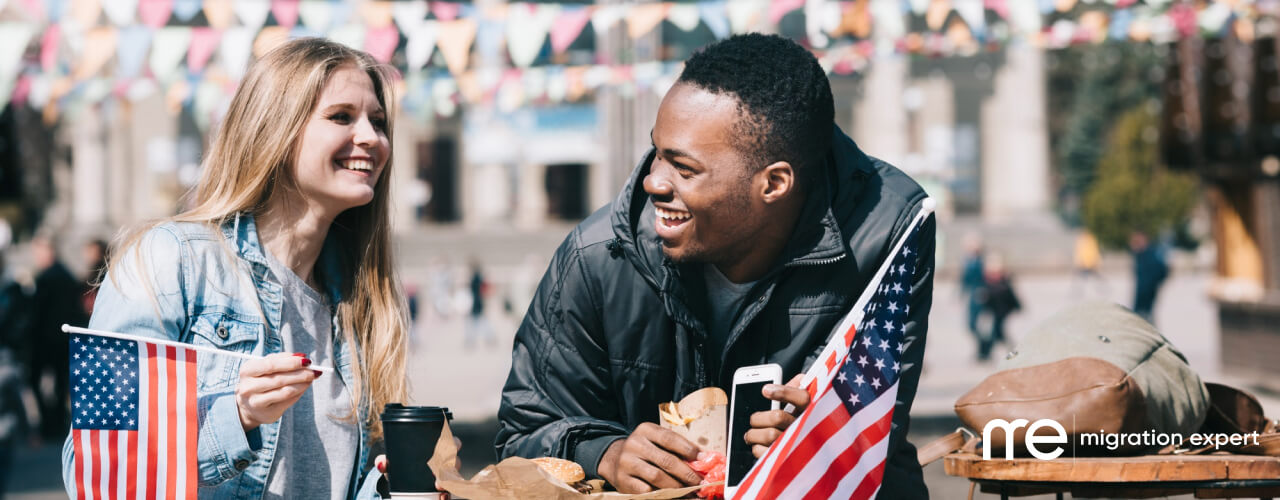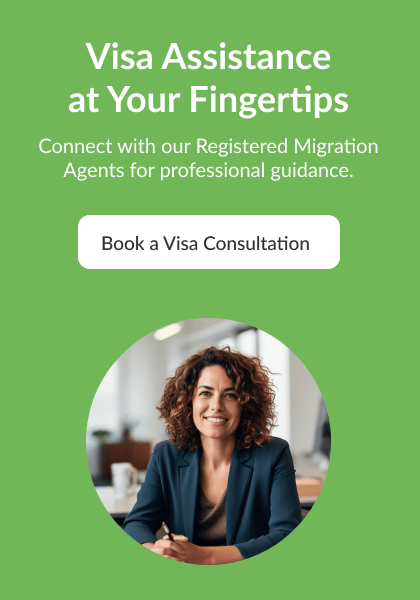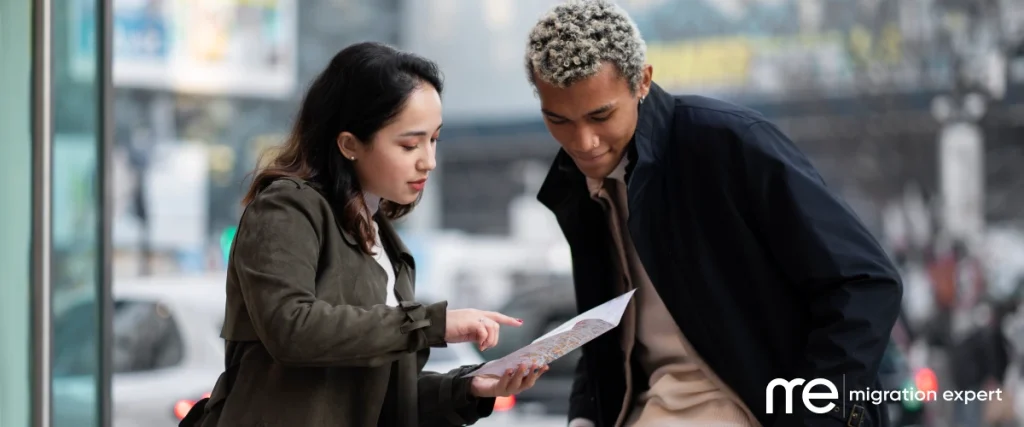The United States remains one of the most popular destinations for people looking to work, study, or settle. Its diverse economy, high-quality education, and opportunities for career growth attract millions of people every year. However, the U.S. visa system can be complex, with multiple visa categories tailored to different needs.
In this blog, we will explore some of the top U.S. visas, providing insight into their eligibility requirements, benefits, and how each visa can help you achieve your goals of living in the U.S.
1. H-1B Visa: For Skilled Workers
Overview
The H-1B visa is one of the most sought-after U.S. visas for foreign professionals. It allows skilled workers in fields such as technology, engineering, healthcare, and finance to work in the U.S. for a temporary period. This visa requires a job offer from a U.S. employer who will act as the visa sponsor.
Who is Eligible?
- Applicants must have a job offer from a U.S. employer for a role in a specialty occupation.
- A bachelor’s degree or higher in a relevant field is typically required.
- The employer must file a Labor Condition Application (LCA) with the Department of Labor.
Key Benefits
- Visa holders can live and work in the U.S. for up to three years, with the option to extend for another three years.
- The H-1B visa provides a pathway to permanent residency if the employer sponsors the worker for a green card.
- Spouses and children of H-1B visa holders can apply for the H-4 dependent visa.
Why It’s Popular
The H-1B visa offers skilled professionals the opportunity to work in one of the world’s largest economies. Its flexibility and possibility of transitioning to permanent residency make it an attractive option.
2. F-1 Visa: For Students
Overview
The F-1 visa is designed for international students who want to pursue academic studies in the U.S. at accredited institutions, such as universities or language schools. This visa allows students to complete their education in the U.S. while giving them the opportunity to work part-time on campus.
Who is Eligible?
- Applicants must be accepted into a U.S. educational institution approved by the Student and Exchange Visitor Program (SEVP).
- Applicants must demonstrate financial capability to support themselves during their stay.
- English proficiency is typically required.
Key Benefits
- F-1 visa holders can work part-time on campus during their studies and apply for Optional Practical Training (OPT) to work in their field for up to 12 months after graduation (or 36 months for STEM graduates).
- The visa allows students to gain valuable experience in the U.S. job market.
- F-1 visa holders can apply for a change of status if they qualify for other visa categories after completing their studies.
Why It’s Popular
The F-1 visa is highly popular because it opens doors to world-renowned U.S. educational institutions and provides international students with the chance to enhance their skills and career prospects.
3. B-1/B-2 Visa: For Business and Tourism
Overview
The B-1/B-2 visa is a non-immigrant visa that allows visitors to travel to the U.S. for business (B-1) or tourism (B-2). It is ideal for those looking to attend business meetings, conferences, or simply visit the U.S. for vacation purposes.
Who is Eligible?
- Applicants must have a legitimate reason for visiting the U.S., such as attending a business meeting, conference, or vacation.
- Applicants must show strong ties to their home country to prove they intend to return after their visit.
- Financial resources must be demonstrated to cover the cost of the trip.
Key Benefits
- Visa holders can stay in the U.S. for up to 6 months, with the possibility of extending their stay.
- The B-1/B-2 visa allows for multiple entries into the U.S., making it convenient for frequent travellers.
Why It’s Popular
The B-1/B-2 visa is popular for its versatility, allowing individuals to travel to the U.S. for both business and leisure. Its long validity and flexibility make it ideal for frequent visitors.
4. L-1 Visa: For Intra-Company Transfers
Overview
The L-1 visa is designed for employees of multinational companies who are being transferred to a U.S. office. There are two types of L-1 visas: the L-1A for managers and executives, and the L-1B for employees with specialized knowledge.
Who is Eligible?
- Applicants must have worked for a multinational company for at least one year within the past three years before the transfer.
- The applicant must be taking a managerial, executive, or specialized knowledge role in the U.S.
Key Benefits
- L-1A visa holders can stay for up to seven years (L-1B for five years).
- The visa allows for dual intent, meaning applicants can pursue permanent residency while on the L-1 visa.
- Spouses of L-1 visa holders can apply for L-2 visas, which allow them to work in the U.S.
Why It’s Popular
The L-1 visa is popular among multinational corporations that need to transfer key employees to their U.S. offices. The opportunity for permanent residency and family benefits also makes this visa an attractive option for professionals.
5. O-1 Visa: For Individuals with Extraordinary Ability
Overview
The O-1 visa is for individuals who possess extraordinary abilities in fields such as arts, sciences, education, business, or athletics. This visa is designed for individuals who have achieved significant recognition in their field.
Who is Eligible?
- Applicants must demonstrate extraordinary ability in their field through sustained national or international recognition.
- Applicants must have a job offer or contract from a U.S. employer or agency.
Key Benefits
- Visa holders can stay in the U.S. for an initial period of three years, with the option for extensions.
- Spouses and children of O-1 visa holders can apply for O-3 visas.
- The O-1 visa allows for multiple entries into the U.S.
Why It’s Popular
The O-1 visa is ideal for top performers in their industries who want to leverage their skills and talents in the U.S. The visa offers flexibility and the potential for long-term residency for extraordinary individuals.
6. E-2 Visa: For Investors
Overview
The E-2 visa is available to nationals of countries that have a treaty of commerce with the U.S. It allows individuals to enter the U.S. to develop and direct a business in which they have invested substantial capital.
Who is Eligible?
- Applicants must be a citizen of a treaty country.
- They must make a substantial investment in a U.S. business.
- The investment must be in an active and operating business (not just a passive investment like stocks).
Key Benefits
- Visa holders can stay for up to two years, with unlimited extensions as long as the business is operational.
- Spouses and children of E-2 visa holders can apply for E-2 dependent visas, and spouses can work in the U.S.
Why It’s Popular
The E-2 visa is popular among entrepreneurs and investors seeking to start or expand their businesses in the U.S. Its flexibility, particularly with extensions, makes it a top choice for investors.
Conclusion
The U.S. offers a wide variety of visa options tailored to different needs, whether you’re seeking to work, study, invest, or simply visit. Each visa category offers unique benefits, and choosing the right one depends on your individual goals and qualifications.
By understanding the eligibility requirements and benefits of each visa type, you can make an informed decision and begin your journey to the United States.
Remember:
This post is for general informational purposes only and is not a substitute for professional immigration advice. Given the uniqueness of every case, engaging with a registered migration agent is highly recommended for bespoke guidance and to navigate the specific details of your situation effectively. Book a visa consultation with a Registered Migration Agent
Subscribe to our newsletter
Sign up to our weekly newsletter to get the latest news about all things visas & immigration.













